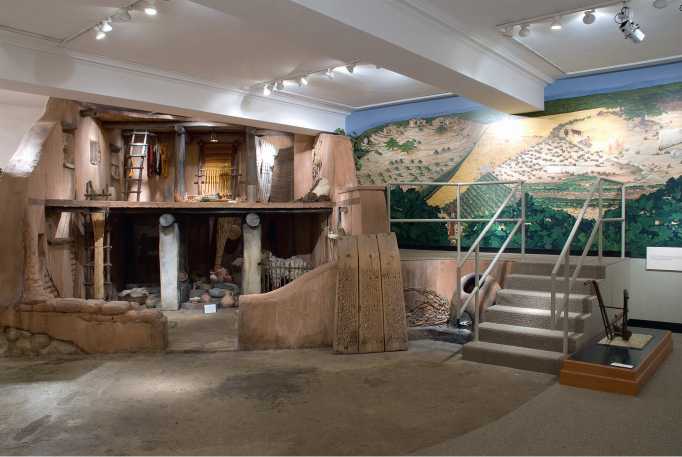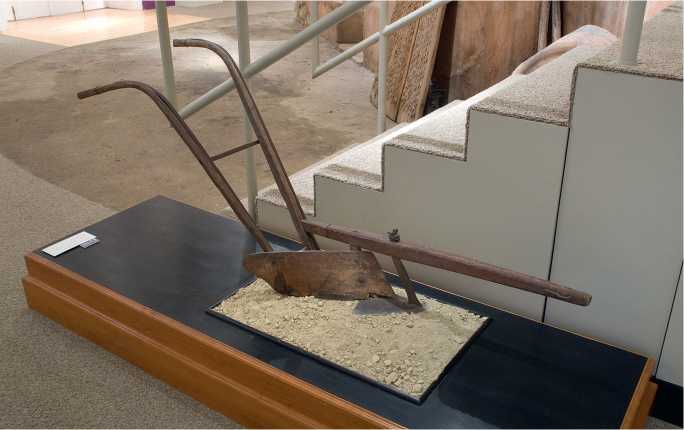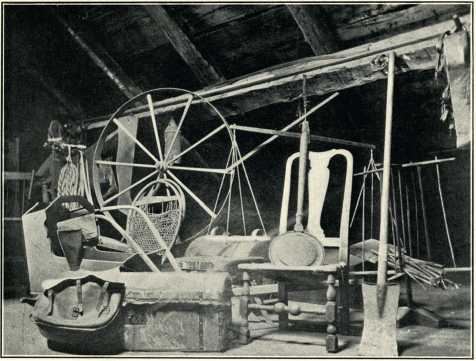He small walking plow, or moldboard plow, displayed in the Semitic Museum at Harvard is at once a familiar and a strange object.67 As a historical item from the General Artemas Ward House Museum, an eighteenth-century house museum owned by Harvard, it suggests a colonial revival aesthetic, one that consciously remembered the forgotten and mythologized past of the Revolutionary General Artemas Ward through his family’s things. It further documents the daily lives experienced by laborers on a New England farm. In the Semitic Museum, across the gallery from an Iron-Age plow point (1200-586 bce) displayed in an exhibit devoted to he Houses of Ancient Israel: Domestic, Royal, Divine, the delicate plow suggests the long global history of agricultural technology, from colonial New England to ancient Israel. Placed in a deliberately anachronistic setting, it also invites reflection on its symbolic meaning. Farming— when contrasted with warfare—has rhetorical value. In many cultures, a plow represents peace and prosperity. Looked at historically, however, farming may also suggest violence, dominance, and colonization. Who owned the land this plow might have furrowed? Who decided how it would be used?68 Plows like this one were in use in New England in the eighteenth and early nineteenth centuries. It is hard to date this common form precisely. Local blacksmiths typically made plows as needed. he curved moldboard would have turned the wet New England soil to prepare for planting and would have once been fully shod with strips of iron. In contrast, the Iron-Age plow point in the gallery—known as a scratch plow—simply had to score the surface of the dry land in ancient Israel. By the 1820s, shod plows were replaced with cast iron patent plows that

119. To the right of the Semitic Museum’s reconstruction of a typical Iron-Age house from ancient Israel, complete with farming implements, Tangible hings installed a late eighteenth - or early nineteenth-century New England plow belonging to the General Artemas Ward House Museum.

120. he walking plow, likely made in Massachusetts in the late eighteenth or early nineteenth century, has a curved moldboard to turn over the soil. It was used by the family of General Artemas Ward.
121. A photograph of the Ward House attic taken in the 1890s shows the plow—its handles visible left of center—in company with a spinning wheel, snowshoes, a cradle, an old trunk, a chair, a bed warmer, a spade, and a balance. General Artemas Ward House Museum.

Offered less resistance as they turned the earth. homas Walter Ward, the son of the illustrious general, purchased cast iron plows in the 1820s to prepare the fields of his farm for planting.69
He small plow sits at just over two feet tall with the beam stretching to over five feet. Although its diminutive size makes it tempting to see it as a child’s toy, it could have accommodated an adult man, holding it upright by the handles and walking behind it in the furrow that it carved in the fields. Its size may also be why it survived for two centuries—perhaps it was not as useful as the larger, heavier plows that ill the Ward family barn. Easily carried to the family attic, it may have survived because it served another purpose.
By the time the Artemas Ward House was left to Harvard in 1925 to become a “public, patriotic museum,” as the donor expressed it, it had already functioned as a local house museum for decades. Elizabeth Ward and her nieces Clara Denny Ward and Florence Ward maintained the homestead as a shrine to their ancestor Major General Artemas Ward, the first commander-in-chief of the Massachusetts forces during the American Revolution. his plow spent countless years in the crowded attic of the Artemas Ward House. Its curved handles are visible in a ca. 1890s photograph of the attic. Along with a spinning wheel, a snowshoe, an old chair, and a dusty trunk, the plow suggested the depth of the family’s material legacy. As artifacts of the colonial revival, these objects were part of a broader movement to remember and recreate stories and plausible fictions about America’s past. he Ward women who preserved the homestead were like the individuals who mourned the loss of the Hancock House on Boston Common, interpreted George Washington’s Mount Vernon, or jumped in front of wrecking balls to save historic architecture. For them, American history was personal, national, and material. his small plow became a tool for shaping this history and their memories.70
He small plow is also a rhetorical tool. It has stood for productivity and the possibilities of a fecund landscape, as opposed to the destruction of war and violence. he biblical verse “hey will beat their swords into plowshares and their spears into pruning hooks” (Isaiah 2:4) suggests the depth of this connection. War no longer seems possible when its violent implements are transformed into a technology of peace and stability.
His metaphor appealed to the leaders of the American Revolution. he Society of the Cincinnati was founded in 1783 by Continental Army officers who hoped to join together to secure money and benefits owed to them by the government. he founders selected a historical figure with a clear association to the land: the great Roman general Cincinnatus. As the Roman historian Livy explains, during a national crisis, a group of senators sought Lucius Quinctius Cincinnatus (520-430 bce) in his fields. Livy recreates the scene: “whether leaning on a stake in a ditch which he was digging, or in the employment of ploughing, engaged at least on some rural work, as is certain, after mutual salutations had passed, being requested by the ambassadors to put on his gown, and listen to the commands of the senate.”71 He agreed to serve as dictator to save Rome. When his duty was done, he relinquished his power peacefully and returned to his fields.
His tale appealed to the former Continental Army officers: Civic duty forced them to serve, while their homes and farms demanded their attention once the war ended. George Washington was sometimes compared to Cincinnatus because he chose to return to Mount Vernon after two terms in office. he obverse of the medal of the Society of the Cincinnati depicts Cincinnatus as he is about to serve his country—on his left a sword, on his right a plow. Perhaps these noble associations were part of the meanings that this plow had for the family of General Artemas Ward?
Prior to the adoption of a singular national currency, plows even appeared on printed banknotes along with ships to indicate the forces that drove the economy of early New England.72 In this context, a plow suggested an investment and a bright future through individual labor made possible by a stable and peaceful society. What aspects of the plow and its world do these metaphors hide?
Because this tool was used to furrow the land, it highlights the physical realities of farm life in central Massachusetts. Plowing the land is a key step in preparing soil for the cultivation of crops. A plow would break and turn over the earth to allow a farmer to sow seeds. In New England, farming dramatically changed the landscape, as illustrated by the Harvard Forest dioramas. By the mid-nineteenth century, 60-80 percent of New England’s forests were cleared to make way for farms. he changing landscape of New England (as well as the day laborers who plowed and transformed it by their work) is central to the story of the plow.73
More important, the Wards were not the first people to inhabit the land occupied by their farm. he Nipmuc people have lived in central Massachusetts for thousands of years. In 1762, General (then Colonel) Ward was even appointed guardian of the local Hassanamisco Band of the Nipmucs. Members of the Hassanamisco Nipmuc likely made several items in the Ward house, including the general’s snowshoes and a grain riddle, a farm tool for separating grain from chaff.74 Ownership of land has been the key political issue for Native peoples like the Nipmuc since European settlers first arrived. he Hassanamisco Indian Museum presents the situation succinctly: “he 3% acre Hassanamisco Reservation is the last portion of a 1728 land grant made to the Nipmuc tribe by the Massachusetts Bay Colony whose eager colonists were clamoring to settle on the tribe’s original grant of 7500 acres.” he complex history of the tribe’s land ownership has been central to the federal government’s decision not to recognize the group as a nation, though the tribe has long been recognized by the Commonwealth of Massachusetts. Plows like this one transformed Nipmuc land into settled farms. In this context, is the plow still a symbol of peace and prosperity? Is it still the opposite of the sword?75
S. A. C.




 World History
World History









